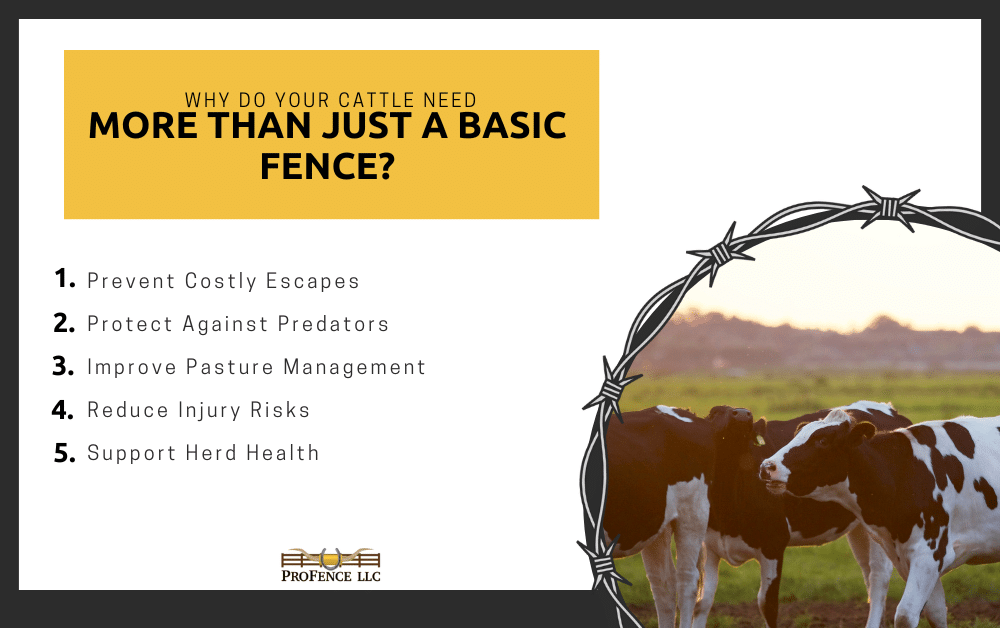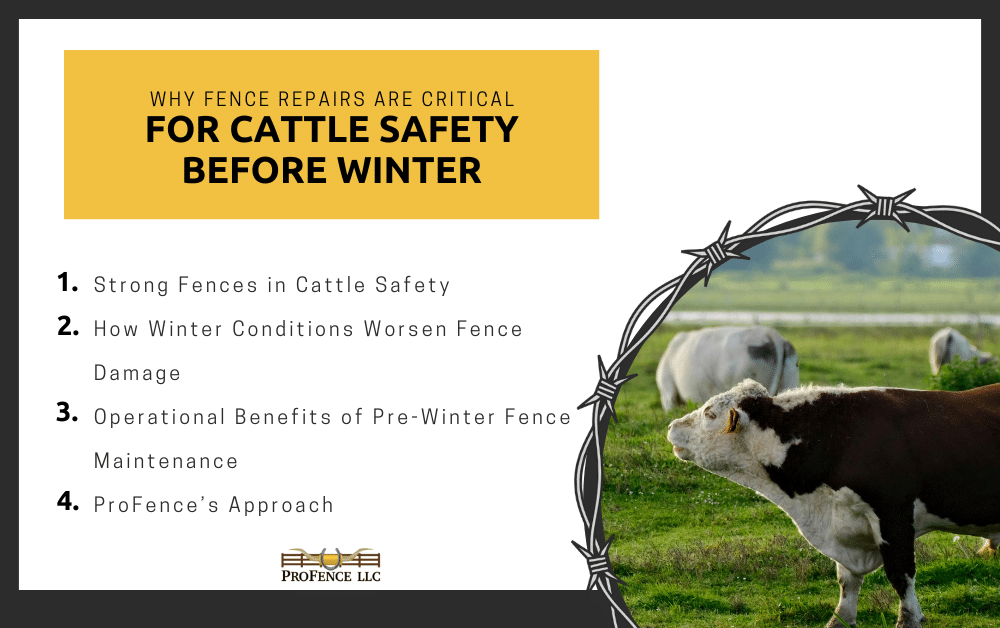Raising cattle isn’t just a job—it’s an investment of time, resources, and heart. You put in countless hours caring for your herd, making sure they’re healthy and productive. Yet one of the most critical aspects of protecting that investment is often treated as an afterthought: fencing.
Sure, any fence might keep cattle in—at least for a while. But truly effective cattle fencing does so much more. It safeguards your livestock, protects your land, and ultimately supports your bottom line. Here’s why your cattle need more than just a basic fence.
The True Role of Fencing in Cattle Operations
A good fence does more than mark property lines or corral cattle. It’s a key tool in managing your entire operation.
- Keeping cattle safe from predators: Quality fencing helps deter coyotes, stray dogs, or even humans from harming or stressing your herd.
- Protecting the public: It prevents your cattle from wandering onto roads, which could lead to accidents and costly liability issues.
- Supporting pasture rotation: With strategic fencing, you can manage grazing areas more effectively, giving pastures time to recover.
- Reducing herd stress: Cattle are creatures of habit. Secure, well-designed fences keep them calm by providing clear boundaries.
Risks of a Basic or Poor-Quality Fence
A run-of-the-mill fence might seem cheaper up front, but it can cost you dearly over time. Here’s how cutting corners can backfire:
- Escapes and lost cattle: Weak fences invite curious or pressured animals to push through or jump over. Recovering strays wastes time and money.
- Injuries: Rusty wires, loose boards, or poorly designed setups can injure cattle, leading to vet bills and lost weight gains.
- Liability headaches: If your cattle get onto a neighbor’s property or a public road, you could be legally responsible for damages.
- Herd management problems: Without solid fencing, directing cattle for rotational grazing, calving, or weaning becomes far more difficult.
Types of Fencing for Cattle—and Why It Matters
Choosing the right fencing isn’t one-size-fits-all. Each type offers different benefits and drawbacks.
Barbed Wire
- Pros: Cost-effective, long-standing traditional choice.
- Cons: Can cause injuries, doesn’t always stop predators, not ideal for bulls.
Woven Wire
- Pros: Provides a physical barrier that’s safer on hides and legs; good for calves.
- Cons: More expensive upfront, needs to be combined with a top strand of barbed or electric wire to keep larger animals respectful.
Hi-Tensile
- Pros: Flexible yet strong, holds tension well, low maintenance, works well with electric.
- Cons: Requires careful installation; may need training for cattle to respect it.
Adding Electric
Electric strands—whether on hi-tensile or combined with barbed/woven—teach cattle to respect the fence line. A brief shock is usually enough to discourage pushing or leaning.
Special Considerations for Different Operations
Not all cattle setups are the same, so fencing must adapt to your herd’s needs.
- Beef vs. dairy: Dairy cattle often stay closer to barns and lanes, while beef herds may roam larger pastures requiring stronger perimeter fencing.
- Handling bulls: Bulls demand stout, tall fencing—often at least 5 feet high, sometimes reinforced with electric.
- Rotational grazing: Cross fencing with portable or semi-permanent options makes it easier to rotate pastures and improve forage utilization.
Long-Term Cost Savings of Better Fencing
A well-built fence might cost more initially, but it pays off by:
- Reducing repairs and replacements: Quality materials and solid construction mean fewer breakages.
- Preventing lost cattle: No more time wasted chasing down escapes.
- Protecting pasture health: Better control over grazing means thicker stands and higher nutrition, translating to better weight gains.
- Lower vet costs: Fewer injuries from entanglements or sharp wire.
Don’t Cut Corners on Cattle Fencing
Fencing isn’t just about keeping cattle contained. It’s about protecting your investment, improving your land, and making daily operations smoother. A solid fence line means fewer problems, healthier cattle, and more time to focus on growing your herd and business.
Ready to Upgrade Your Cattle Fence?
If it’s been a while since you evaluated your fencing—or you’re still relying on patched-together lines—it might be time for an upgrade. Talk with ProFence to find a solution tailored to your herd, your land, and your goals.







